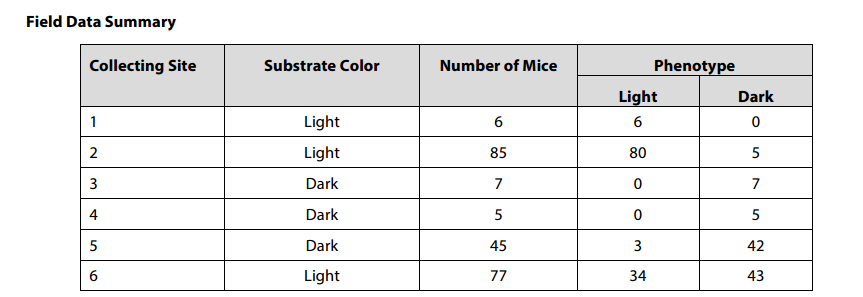

Dice and Blossom (1937) suggested that this crypsis is an adaptation to avoid predation. intermedius coat color typically matches the color of the rocks on which the mice live the dorsal pelage varies from a light, sandy color for populations found on some granites to a dark, nearly black color for populations found on basalt lava flows.
COLOR VARIATION OVER TIME IN ROCK POCKET MOUSE POPULATIONS SERIES
So see if the frequency of fur colors changes with changes in the environments color.In a series of classic studies in mammalian evolutionary biology, Sumner (1921), Benson (1933), and Dice and Blossom (1937) described striking coat color variation in the rock pocket mouse, Chaetodipus intermedius, in the deserts of Arizona and New Mexico. To determine if the rock pocket mouse population is evolving, explain why it is necessary to collect fur color frequency data over a period of many years. When different genetic mutations produce the same phenotypes in different areas, these similar adaptations are favored under similar conditions.Ĩ. How does this study support the concept that natural selection is not random?

These findings suggest that adaptive dark coloration has occurred at least twice in the rock pocket mouse and that these similar phenotypic changes have different genetic bases. No Mc1r mutations were associated with dark fur color in the New Mexico populations. The mutations responsible for the dark fur color in the Arizona mice were absent from the three different populations of New Mexico mice. The entire Mc1r gene was sequenced in all 76 of the mice collected. However, the dark-colored mice from the three New Mexico locations were slightly darker than the dark-colored mice from the Arizona population. Nachman and colleagues observed no significant differences in the color of the rocks in the four locations sampled. In a separate study, 76 rock pocket mice were collected from four different, widely separated areas of dark lava rock. The color of the landscape changed so that some members of the population were more visible to predators than other members were.ħ. According to the film, what environmental change gave a selective advantage for one coat color over another? Light colored fur, the overall frequency of light colored mice is greater than that of dark colored mice.Ħ. Which fur color seems to have the greatest overall selective advantage? Use data collected from both dark-colored and light-colored substrates to support your answer. Using the Hardy-Weinberg equation and data from the table above, determine the number of mice with the DD and Dd genotypes on the dark, rocky lava substrate.įrequency of mice with the dd genotype on dark-colored substrate _.05_ Frequency of mice with the DD genotype on dark-colored substrate _.94_ Frequency of mice with the Dd genotype on dark-colored substrate _.94_ĥ. Using the Hardy-Weinberg equation and data from the table above, determine the number of mice with the DD and Dd genotypes on the light, rocky, granite substrate.įrequency of mice with the dd genotype on light-colored substrate _.71_ Frequency of mice with the DD genotype on light-colored substrate _.28_ Frequency of mice with the Dd genotype on light-colored substrate _.28_Ĥ. Frequency = number of mice of one color/total number of miceįrequency of light-colored mice _.05_ Frequency of dark-colored mice _.94_ģ. Calculate the overall frequencies of light-colored mice and dark-colored mice caught on dark-colored substrates. Frequency = number of mice of one color/total number of mice Frequency of light-colored mice _.54_ Frequency of dark-colored mice _.453_Ģ. Calculate the overall frequencies of light-colored mice and dark-colored mice caught on light-colored substrates. Ecological Genetics of Adaptive Color Polymorphism in Pocket Mice: Geographic Variation in Selected and Neutral Genes. Source of data: Hoekstra, Hopi E., Kristen E. Their data are summarized below.Ĭollecting SiteSubstrate ColorNumber of MicePhenotype The researchers trapped a total of 225 mice. Each site was separated from any of the others by at least eight kilometers. They recorded substrate color and coat-color frequencies for each location. Nachman and his colleagues collected rock pocket mice across 35 kilometers of the Arizona Sonoran Desert, which included both dark, rocky lava outcrops and light, rocky, granite areas. APPLYING HARDY-WEINBERG TO ROCK POCKET MOUSE FIELD DATA Dr.


 0 kommentar(er)
0 kommentar(er)
